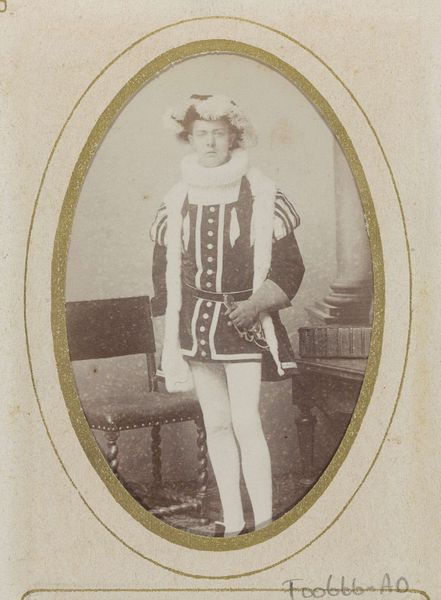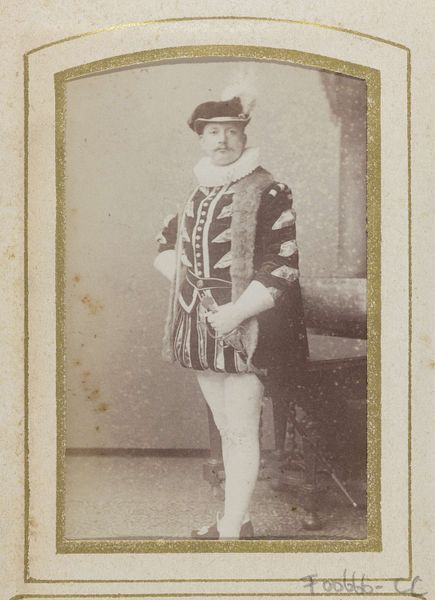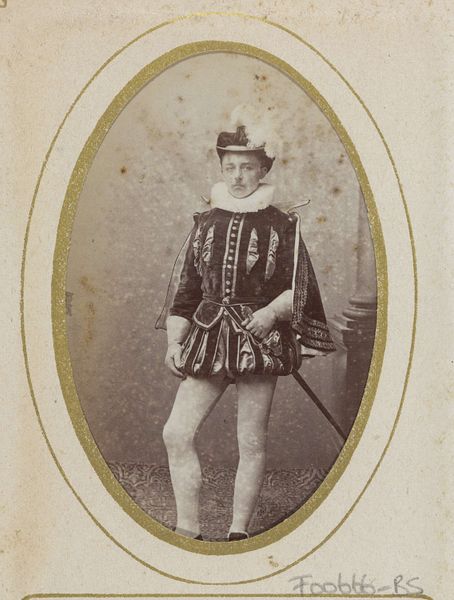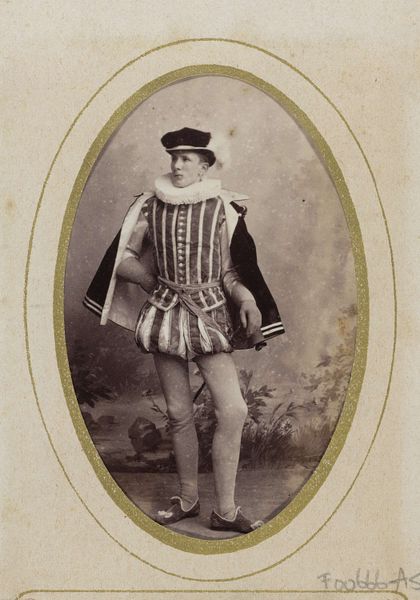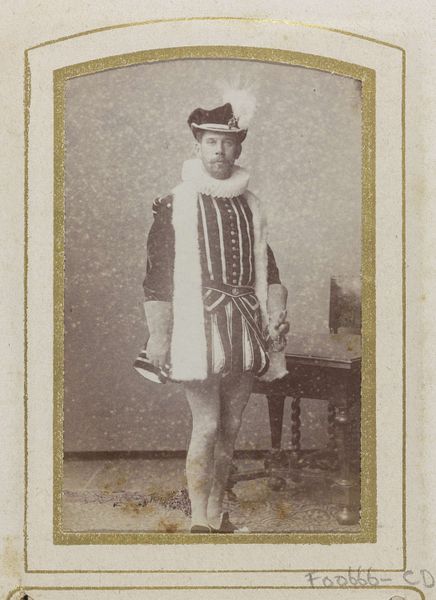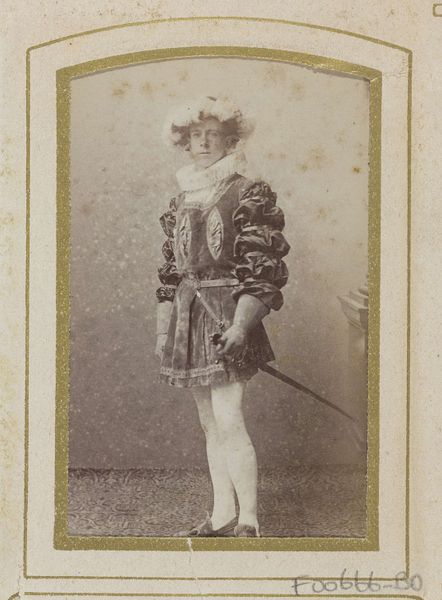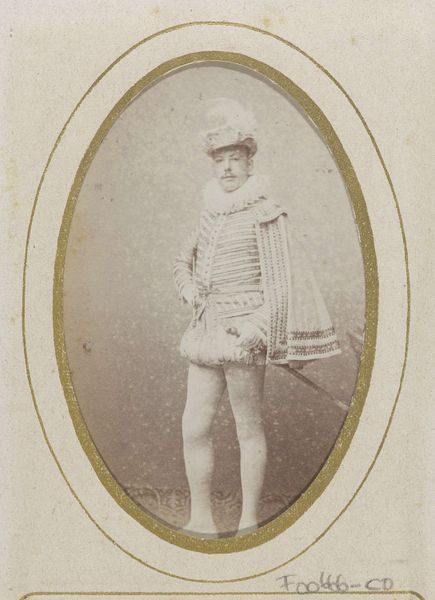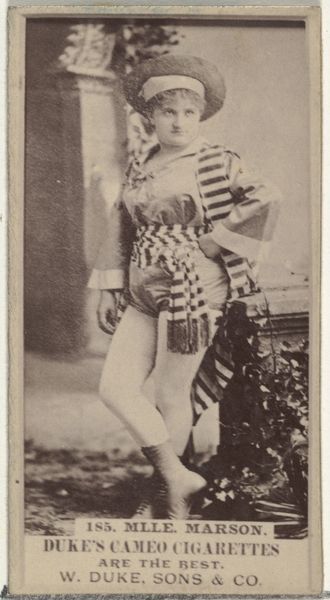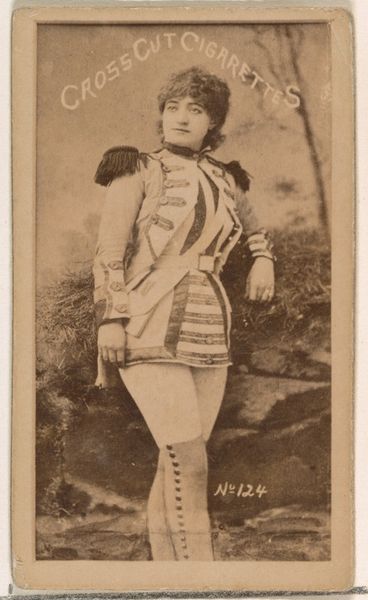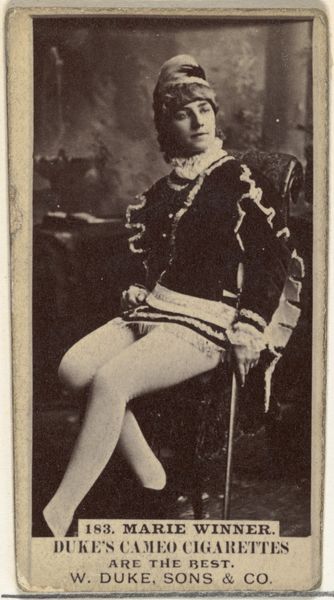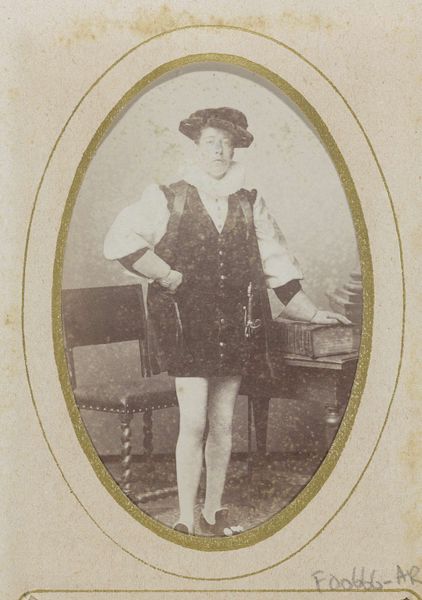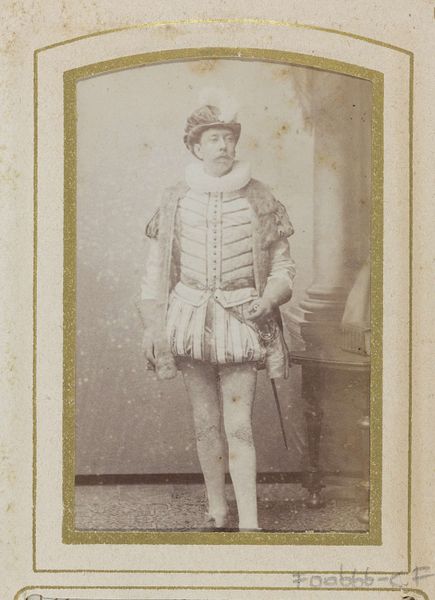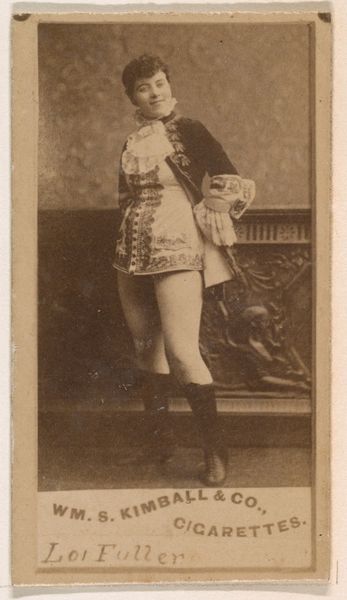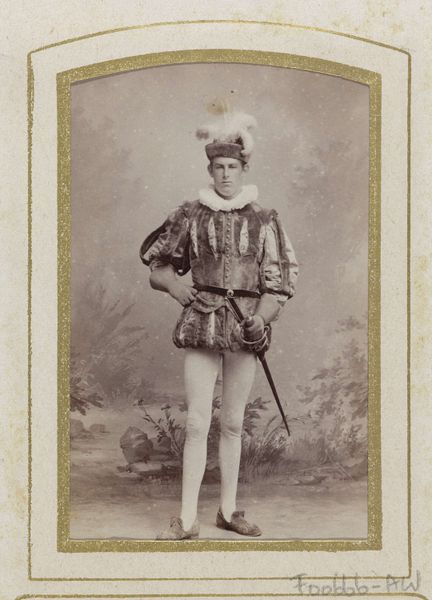
photography
#
portrait
#
photography
#
historical fashion
#
academic-art
#
watercolor
#
realism
Dimensions: height 83 mm, width 52 mm
Copyright: Rijks Museum: Open Domain
Curator: Ah, here's a fascinating example of 19th-century photography! This portrait, captured between 1880 and 1883 by Jan Goedeljee, presents a man in costume, believed to be W. Holleman. It's striking, isn't it? Editor: My goodness, he looks like he’s stepped straight out of a Shakespeare play… or perhaps a slightly eccentric history lesson! There's such theatrical flair about him. A delightful snapshot of another era. Curator: Absolutely. We need to consider photography’s role then, especially portraits, within a context heavily shaped by social and economic hierarchies. Who could afford this? What statement does this attire make about social status, wealth? Academic art meets realism in such pieces. Editor: Right, right. It’s staged, definitely, yet there’s this little sparkle of personality peeking through… perhaps defiance even? Did he really want to wear the giant neck ruff? Or is he acting it out for posterity, perhaps with some degree of humor at his own, or maybe the viewers, expense? And, look, his little feathery hat, the tight breeches… Curator: Notice the watercolor effect of the photograph itself? It links it visually to the portraiture of painting. This interplay is key. Also, while considering identity, note how the costume’s very artifice reveals, or perhaps obscures, facets of gender expression in the late 19th century. What messages, intended or not, were sent through his visual performance? Editor: Clever. It is interesting how a "historical fashion" look—with its over-the-top styling—brings its wearer immediately to another mental landscape, the costume announcing: *beware—historical being walking!*. I'm left musing what history books we are all, even now, hoping to write by the way we adorn ourselves every morning... or perhaps for that occasional staged portrait. Curator: Yes, the implications extend far beyond a single portrait, and prompt much needed dialogue around art's function in identity formation and cultural discourse. Editor: Precisely, precisely. It's opened up this space, and it makes us more informed for doing so.
Comments
No comments
Be the first to comment and join the conversation on the ultimate creative platform.
